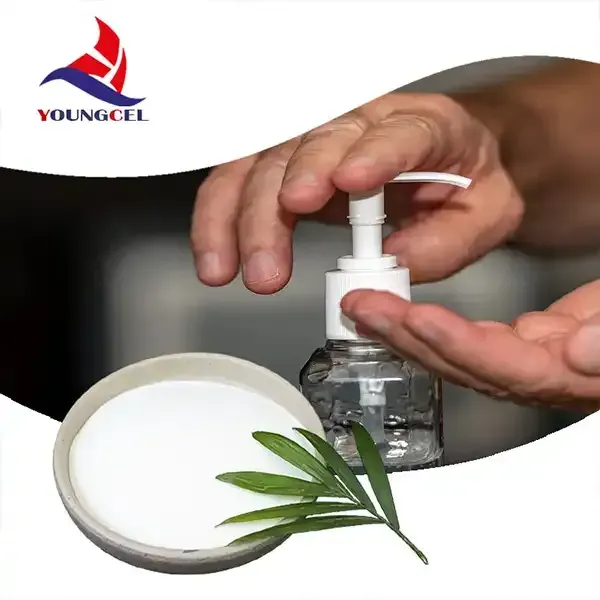Understanding Cellulose Ether HPMC Composition, Properties, and Applications
Hydroxypropyl Methylcellulose (HPMC) is a prominent cellulose ether that plays a crucial role in various industries including pharmaceuticals, construction, cosmetics, and food. Derived from cellulose, a natural polymer obtained from plant cell walls, HPMC is synthesized through a series of chemical processes that involve the modification of cellulose structure. This article delves into the composition, properties, and applications of HPMC, underscoring its significance in contemporary industries.
Composition of HPMC
HPMC is created by the etherification of cellulose. The process involves the reaction of cellulose with propylene oxide and methyl chloride, resulting in the introduction of hydroxypropyl and methyl groups onto the cellulose backbone. The degree of substitution (DS) of these groups determines the functional properties of HPMC. The resultant compound is a white, odorless powder that is soluble in water and forms a clear, viscous solution.
Through varying the ratios of hydroxypropyl and methyl substitutions, manufacturers can create HPMC with different characteristics, allowing customization for specific applications. Generally, HPMC consists of 27-30% methoxy groups and 7-12% hydroxypropyl groups, with the rest being cellulose. These variations significantly influence the thermal stability, viscosity, and gel-forming properties of HPMC.
Properties of HPMC
One of the standout features of HPMC is its high water retention capacity, which makes it an excellent binder and thickening agent. When dissolved, it produces a stable gel that provides a smooth texture, making it desirable in cosmetic products and food applications. Its water-binding properties also enhance the moisture retention in formulating creams and lotions, contributing to long-lasting hydration.
Another remarkable property of HPMC is its pH neutrality, rendering it ideal for use in sensitive applications. It does not interfere with the skin's natural barrier and is compatible with a variety of other ingredients, including those used in pharmaceutical formulations. Its non-ionic nature ensures minimal interaction with active pharmaceutical ingredients (APIs), maintaining the efficacy of the formulations.
Furthermore, HPMC exhibits excellent film-forming capabilities. It can create a semi-permeable film that protects active ingredients from oxidation while allowing moisture permeability. This property is particularly valuable in the development of drug delivery systems, where controlled release is paramount.
cellulose ether hpmc

Applications of HPMC
The versatility of HPMC extends to several sectors
1. Pharmaceuticals In the pharmaceutical industry, HPMC is widely used as a binder, thickener, and film-forming agent in tablets and capsules. It enhances the stability and bioavailability of drugs, making it a critical component in formulation development. Its ability to control the release of drugs has made it a popular choice for developing sustained-release dosage forms.
2. Construction HPMC is used in adhesives, grouts, and mortars, enhancing the workability and water retention properties of these materials. It improves adhesion and flexibility, allowing for better performance in varied environmental conditions. Additionally, HPMC's thickening properties help achieve the desired consistency and application characteristics for construction mixtures.
3. Cosmetics The cosmetic industry benefits significantly from HPMC’s thickening and emulsifying properties. It is commonly used in lotions, creams, shampoos, and other personal care products, contributing to texture, stability, and moisturizing effects. Its safe profile makes it an attractive ingredient for formulations meant for sensitive skin.
4. Food Industry In the food sector, HPMC acts as a thickening agent, stabilizer, and emulsifier. It helps maintain texture and consistency in various products, such as sauces, dressings, and baked goods. Furthermore, its ability to retain moisture can contribute to improved shelf life and quality of food items.
Conclusion
Hydroxypropyl Methylcellulose (HPMC) is a versatile cellulose ether with numerous applications across various industries. Its unique composition and properties allow it to serve as an effective binder, thickener, and film-forming agent. As innovations continue to shape the landscape of product development, the relevance of HPMC is expected to grow, establishing it as a staple in formulations that prioritize quality, performance, and sustainability.
-
Rdp Powder: Key Considerations for Wholesalers in the Building Materials IndustryNewsJul.08,2025
-
Key Considerations for Wholesalers: Navigating the World of Hpmc - Based ProductsNewsJul.08,2025
-
Hpmc Detergent: Key Considerations for WholesalersNewsJul.08,2025
-
Key Considerations for Wholesalers: China Hpmc For Tile Adhesive, Coating Additives, Concrete Additives, and MoreNewsJul.08,2025
-
Crucial Considerations for Wholesalers: Navigating the World of Construction MaterialsNewsJul.08,2025
-
Key Considerations for Wholesalers Sourcing Additive For Cement, Additive For Concrete, Additive For Putty from Additive Manufacturer Shijiazhuang Gaocheng District Yongfeng Cellulose Co., Ltd.NewsJul.08,2025




